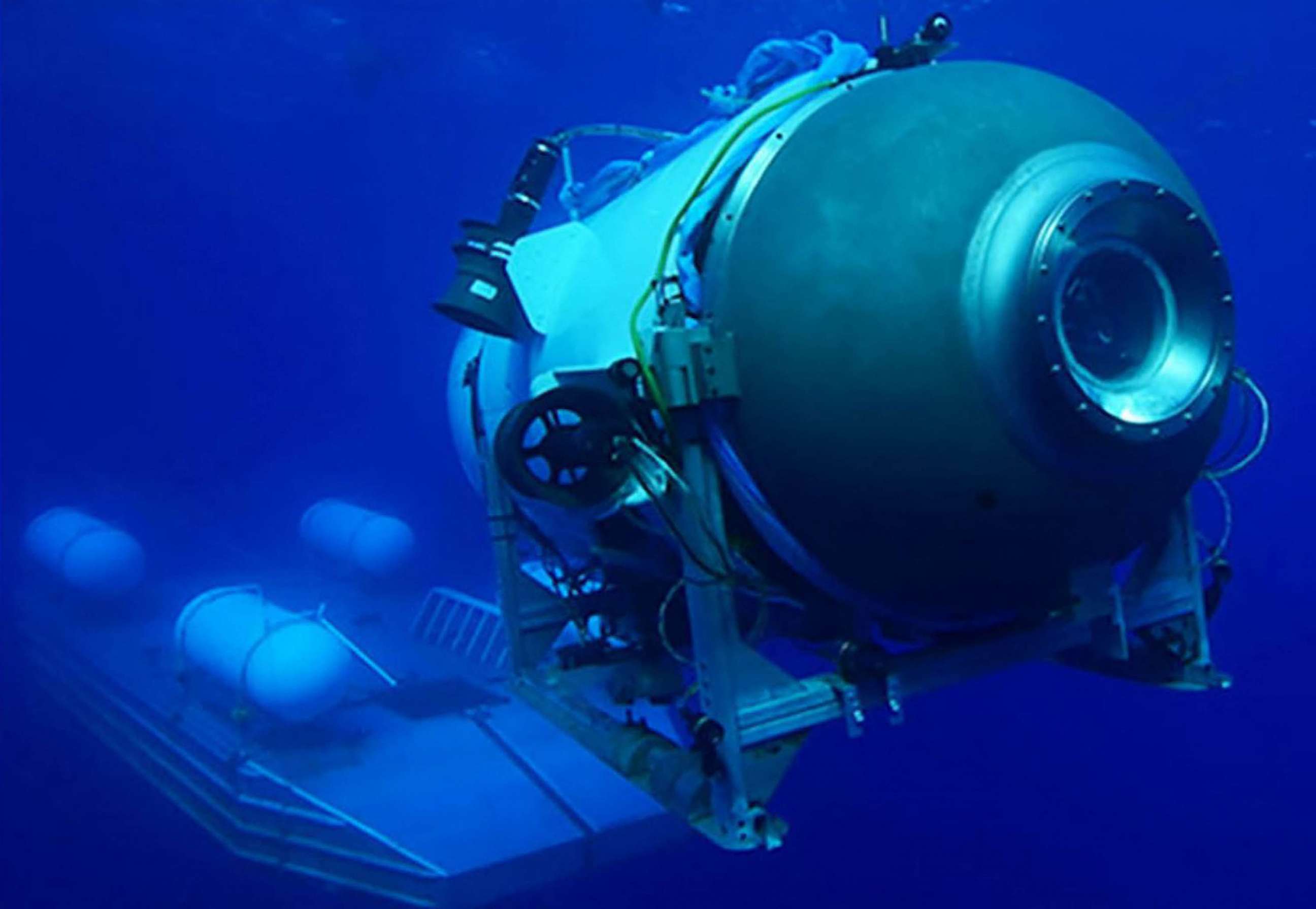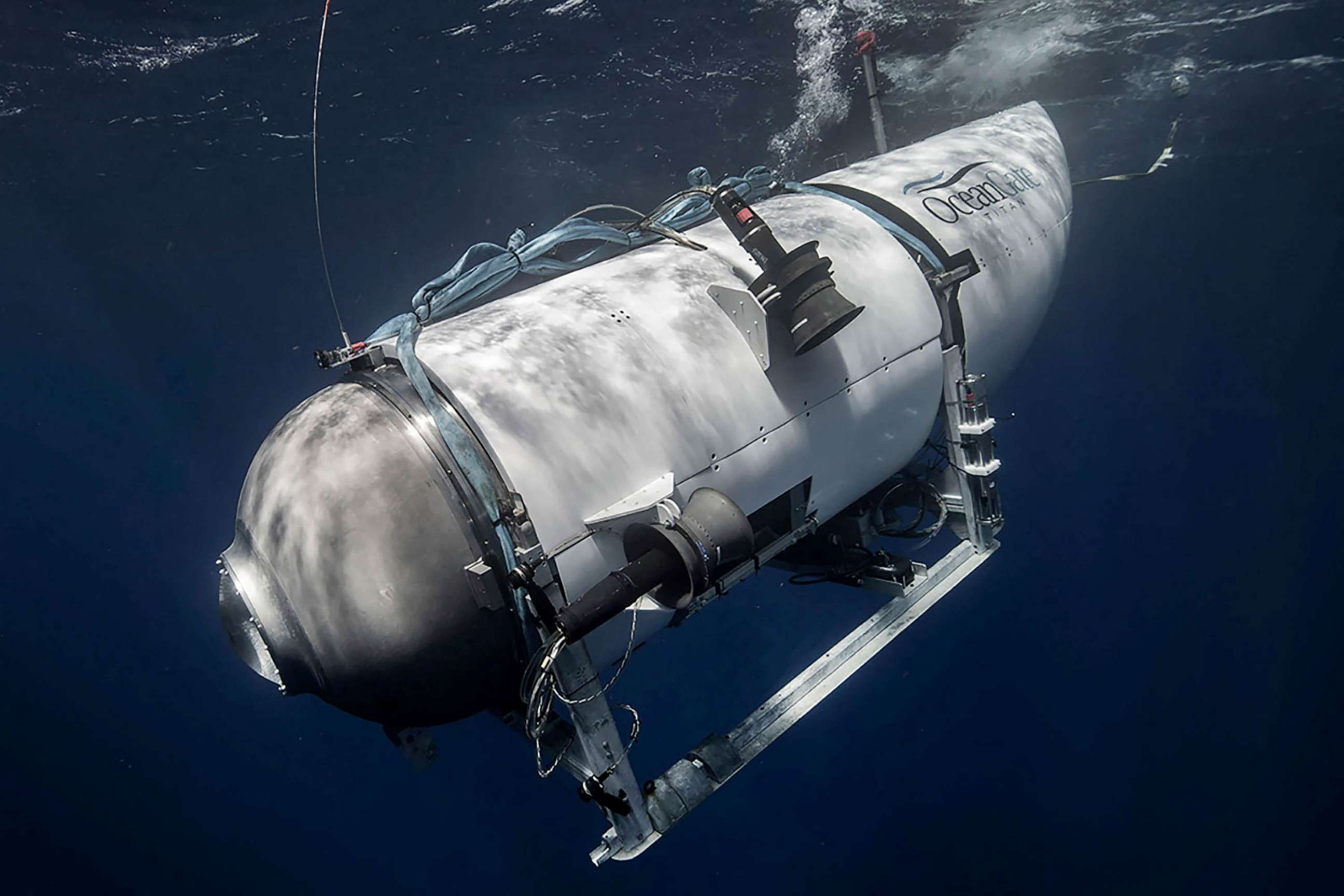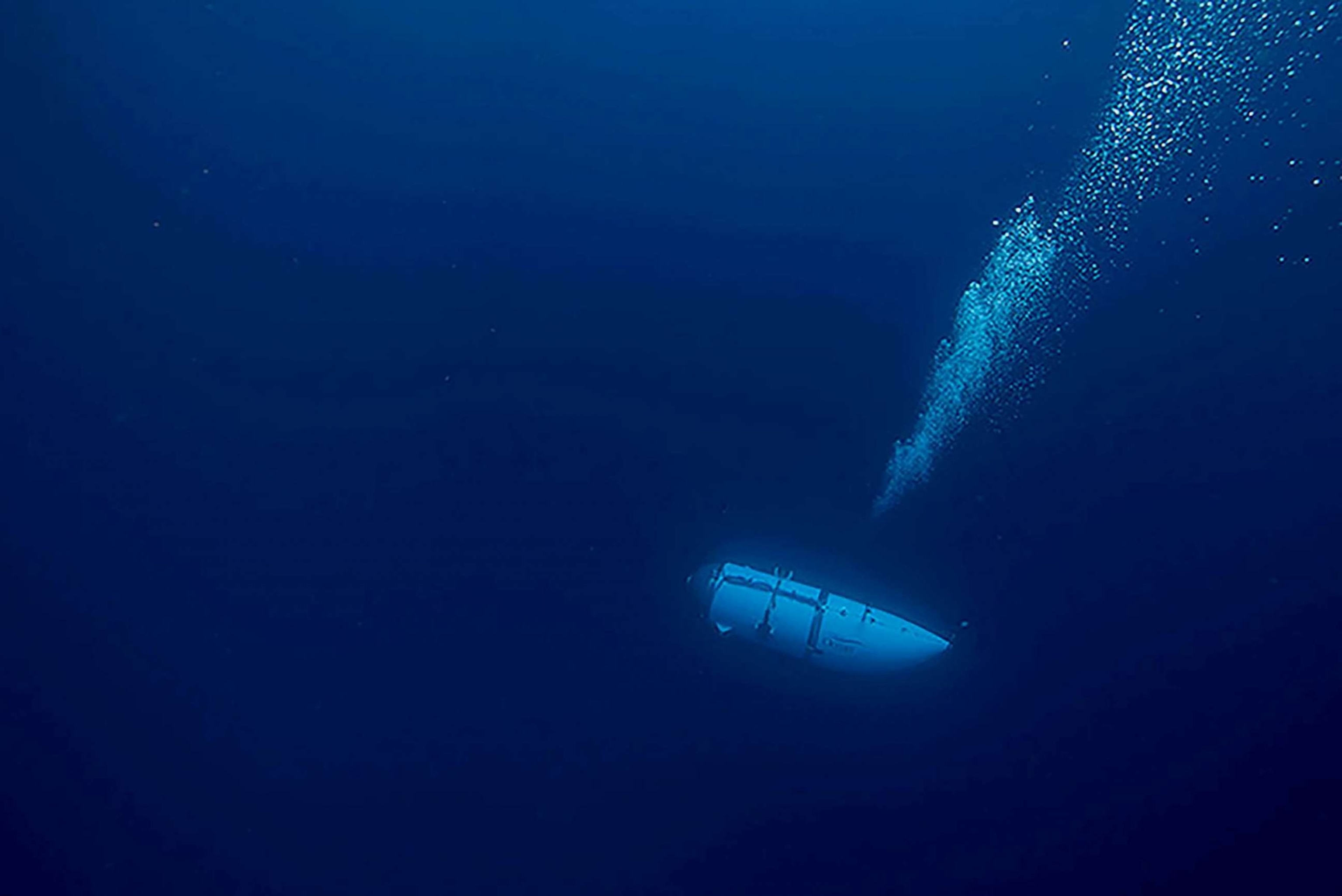Lawsuit alleged flaws with Titanic submersible now missing
A former OceanGate employee contends he was fired for raising concerns.
A former employee of OceanGate alleged in a 2018 counterclaim lawsuit that he was fired for raising concerns about quality control and testing of potential flaws of an experimental submersible. It is unclear whether this is the same vessel or newer model that lost contact this week with its crew and passengers on an underwater tourist venture to see the wreck of the Titanic.
David Lochridge, an engineer and submarine pilot, claimed in his counterclaim against OceanGate that he was hired in 2015 by the Everett, Washington, company to ensure the safety of all crew and clients during the submersible and surface operations of the vessel called Titan. But when he expressed concerns about the design and testing of the minisub's hull, he said he was terminated by the company.
OceanGate had initially sued Lochridge alleging, among other things, breach of contract, fraud, and misappropriation of trade secrets – all claims he denied.

In its lawsuit, OceanGate accused Lochridge of breaching his contract by discussing the company's confidential information with the Occupational Safety and Health Administration "when he filed a false report claiming that he was discharged in retaliation for being a whistleblower."
Lochridge and OceanGate settled the dispute out of court in November 2018.
It remains unclear what caused the submersible to go missing or if any of the concerns that Lochridge raised were a factor.
Neither Lochridge nor OceanGate officials could be reached by ABC News for comment.
In the lawsuit, Lochridge, originally from Scotland, claimed that when he joined OceanGate, the company's chief executive officer, Stockton Rush, who is believed to be aboard the missing submersible, tasked him to conduct a quality control inspection to "ensure the safety of all crew and clients during the submersible and surface operations" of the experimental vessel.
But Lochridge, according to the suit, raised concerns about the design of the submersible's hull, particularly that it was made of carbon fiber instead of a metallic composition.
Lochridge, according to the suit, objected to OceanGate's and its CEO's "deviation from an original plan to conduct non-destructive testing and unmanned pressure testing" on the Titan.
"Lockridge disagreed with OceanGate's position to dive the submersible without any non-destructive testing to prove its integrity and to subject passengers to extreme danger in an experimental submersible," the suit said.
OceanGate, according to the lawsuit, intended for the Titan to carry passengers to extreme underwater depths of 4,000 meters, "a depth never before reached by an OceanGate manned submersible composed of carbon fiber."

During one company meeting, issues of quality control with the submersible were raised "as there were evident flaws throughout the build process," according to the lawsuit.
Lochridge alleged that he requested paperwork from the company's engineering director "regarding the viewport test result of the viewport for the Titan," according to the lawsuit.
"Lochridge was met with hostility and denied access to the necessary documentation that should have been freely available as a part of his inspection process," the lawsuit said.
Because his "verbal communications were ignored," Lochridge claims he wrote a report, saying, "Now is the time to properly address items that pose a safety risk to personnel."
He claimed that since his verbal concerns over key items were dismissed, he wrote his inspection report "so there is an official record," according to the lawsuit.
"In the Inspection Report, Lochridge identified numerous issues that posed serious safety concerns, and offered corrective action and recommendations for each," the lawsuit stated. "Lochridge primarily expressed concern regarding the lack of non-destructive testing performed on the hull of the Titan."

Lochridge, according to the lawsuit, was repeatedly told that no scan of the hull or Bond Line could be done to check for delaminations, porosity and voids of sufficient adhesion of the glue being used due to the thickness of the hull.
"Lockridge was told that no form of equipment existed to perform such test," according to the lawsuit.
According to the suit, on Jan. 19, 2018, a day after he filed his report, Lochridge was called to the meeting with company executives.
"At the meeting, Lochridge discovered why he had been denied access to the viewport information from the Engineering department -- the viewport at the forward of the submersible was only built to a certified pressure of 1,300 meters, although OceanGate intended to take passengers down to depths of 4,000 meters," the lawsuit said. "The paying passengers would not be aware, and would not be informed, of this experimental design, the lack of non-destructive testing of the hull, or that hazardous flammable materials were being used within the submersible."
Lochridge claimed he again expressed his concerns at the meeting.
"Rather than address his concerns or undergo corrective action to rectify and ensure the safety of the experimental Titan, or utilize a standard classification agency to inspect the Titan, OceanGate did the exact opposite -- they immediately fired Lochridge," the suit said.
Editor’s note: This story has been updated to reflect new information that the employee’s complaints may have been about an older model than the one taken by the late passengers and crew of the Titan
ABC News' Victor Ordonez and Amanda Maile contributed to this report.



